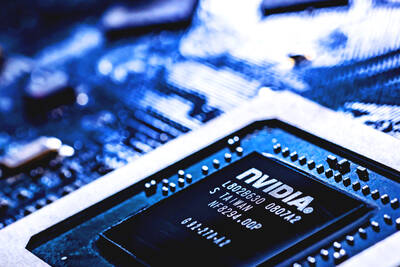US newspaper advertising revenue fell nearly 28 percent in the third quarter, continuing a slide which has led to layoffs, bankruptcies and the closure of several dailies.
Print and online advertising revenue declined to US$6.4 billion in the third quarter from US$8.9 billion in the same quarter a year ago, figures released by the Newspaper Association of America (NAA) showed.
Print advertising revenue fell 28.95 percent to US$5.8 billion, with classified advertising revenue down 37.9 percent to US$1.46 billion.
Classified ad revenue at US newspapers has collapsed in recent years faced with competition from free online classified sites such as Craigslist.
The online advertising picture was not much brighter. Online advertising revenue declined 16.92 percent in the quarter to US$623.1 million.
NAA president and chief executive John Sturm said “given the depressed state of the overall economy,” the third quarter figures should “come as no surprise.”
“Rather, these numbers are in line with most expectations, and even show some modest directional improvement in key categories like retail and national,” Sturm said in a statement.
“There may not be great visibility into 2010 and beyond, but the broad consensus is that the worst has passed,” he said.
Newspapers across the US have been grappling with a slide in advertising revenue, steadily declining circulation and the migration of readers to free news online.
Average daily circulation for 379 daily newspapers was down 10.6 percent in the April-to-September period compared with the same period last year, figures released by the Audit Bureau of Circulations figures last month showed.
Print advertising revenue at US newspapers has now fallen for 13 quarters in a row, NAA figures showed, while online ad revenue has dropped for the past six quarters.
With advertising revenue evaporating, top US newspaper executives led by News Corp chairman Rupert Murdoch have been looking at ways to begin charging readers for news on the Web.

When Lika Megreladze was a child, life in her native western Georgian region of Guria revolved around tea. Her mother worked for decades as a scientist at the Soviet Union’s Institute of Tea and Subtropical Crops in the village of Anaseuli, Georgia, perfecting cultivation methods for a Georgian tea industry that supplied the bulk of the vast communist state’s brews. “When I was a child, this was only my mum’s workplace. Only later I realized that it was something big,” she said. Now, the institute lies abandoned. Yellowed papers are strewn around its decaying corridors, and a statue of Soviet founder Vladimir Lenin

UNCERTAINTIES: Exports surged 34.1% and private investment grew 7.03% to outpace expectations in the first half, although US tariffs could stall momentum The Chung-Hua Institution for Economic Research (CIER, 中華經濟研究院) yesterday raised its GDP growth forecast to 3.05 percent this year on a robust first-half performance, but warned that US tariff threats and external uncertainty could stall momentum in the second half of the year. “The first half proved exceptionally strong, allowing room for optimism,” CIER president Lien Hsien-ming (連賢明) said. “But the growth momentum may slow moving forward due to US tariffs.” The tariff threat poses definite downside risks, although the scale of the impact remains unclear given the unpredictability of US President Donald Trump’s policies, Lien said. Despite the headwinds, Taiwan is likely

UNIFYING OPPOSITION: Numerous companies have registered complaints over the potential levies, bringing together rival automakers in voicing their reservations US President Donald Trump is readying plans for industry-specific tariffs to kick in alongside his country-by-country duties in two weeks, ramping up his push to reshape the US’ standing in the global trading system by penalizing purchases from abroad. Administration officials could release details of Trump’s planned 50 percent duty on copper in the days before they are set to take effect on Friday next week, a person familiar with the matter said. That is the same date Trump’s “reciprocal” levies on products from more than 100 nations are slated to begin. Trump on Tuesday said that he is likely to impose tariffs

HELPING HAND: Approving the sale of H20s could give China the edge it needs to capture market share and become the global standard, a US representative said The US President Donald Trump administration’s decision allowing Nvidia Corp to resume shipments of its H20 artificial intelligence (AI) chips to China risks bolstering Beijing’s military capabilities and expanding its capacity to compete with the US, the head of the US House Select Committee on Strategic Competition Between the United States and the Chinese Communist Party said. “The H20, which is a cost-effective and powerful AI inference chip, far surpasses China’s indigenous capability and would therefore provide a substantial increase to China’s AI development,” committee chairman John Moolenaar, a Michigan Republican, said on Friday in a letter to US Secretary of